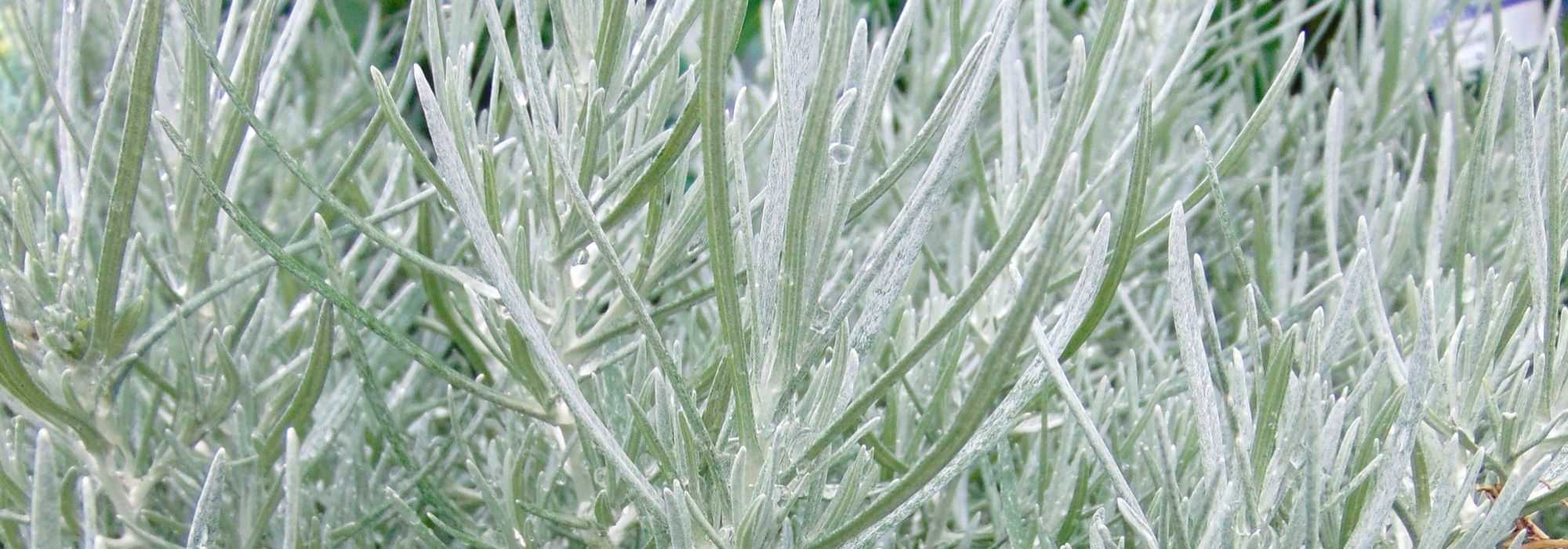
Helichrysum, curry plant, everlastings: sowing, planting, caring for
Contents
Everlastings in a nutshell
- Distinguish perennial Helichrysum or immortelles (H.italicum, H.stoechas) from annuals (bracted immortelles or Helichrysum bracteatum)
- Perennial immortelles have golden pompom flowers on very aromatic silvery-grey foliage, giving off a spicy curry scent
- Bracted immortelles are notable for their colourful, scale-like flowers that do not fade and make the most beautiful dried bouquets
- All grow in full sun in very free-draining soil
- They flower, with no maintenance, from June until frosts in rockeries, slopes, pots or slightly wild garden borders
A word from our expert
Genus Helichrysum includes various Mediterranean plants better known as immortelles. Among them, Helichrysum italicum, Helicryse italienne or Corsican immortelle, from which an anti-wrinkle essential oil is extracted, Helichrysum stoechas also called “dune immortelle” with very downy leaves, Helichrysum thianschanicum, Helichrysum arenarium and Helichrysum petiolare which are perennial immortelles, and Helichrysum bracteatum or bracteate immortelles which are annuals prized for their dried flowers.
All are recognised as medicinal plants but, beyond being famed as miracle anti-age flowers, immortelle has much to offer!
The perennial immortelles or “curry plants” stand out for their silver foliage topped with sun-yellow flowers from summer to first frosts, and above all for the powerful curry-like scent they give off, as with Helichrysum italicum much appreciated in garden and kitchen alike.
The bracteate immortelle has flowers that never fade, which retain their colours when dried, making them the best flowers for creating pretty dried bouquets. Pink, orange, white, blue-lilac or red — thanks to many horticultural selections, annual immortelle flowers come in a wide range of bright shades.
Whether hardy or annual, immortelle fears neither drought nor sea spray, and likes heat and well-drained soils, rather poor and calcareous; bracteate immortelle will, however, appreciate a little more coolness at its base.
In rockery, border, vegetable garden, in a pot or as a bouquet for indoors, adopt Helichrysum to keep a flowering display in dry gardens through to early winter.
Treat yourself to our Mediterranean perennials and discover our seeds for dried bouquets!
Description and botany
Botanical data
- Latin name Helichrysum
- Family Asteraceae
- Common name Immortelle, curry plant
- Flowering July to October
- Height 0.25 m to 1.20 m
- Sun exposure Sun
- Soil type Stony, fresh
- Hardiness -2 to -15°C depending on species
The Helichrysum, helichryse or immortelle belongs to the vast family Asteraceae, like daisies and asters.
Genus includes 500 species of perennial herbaceous, annual or sub-shrub plants with often woody, aromatic stems, native to arid hills of sunny Mediterranean regions, notably Italy but also Asia, South Africa and Australia.
Among the most common are:
- perennial immortelles such as Helichrysum italicum, Corsican immortelle, Italian immortelle, curry plant whose very aromatic foliage gives off a powerful curry scent; common immortelle or “dune immortelle” (Helichrysum stoechas) with downy leaves and erect, tuft-like flowers; and woolly immortelle (Helichrysum petiolare) recognisable by its grey, woolly leaves and available in many cultivars.
- their less hardy cousin, Helichrysum bracteatum (also known as Bracteantha bracteata or bracteate immortelle) which is perennial in its native land but grown as an annual in our climates. It is prized for its multicoloured heads that are essential in dried bouquets.
Plant quickly forms a dense, rounded tuft, upright (Helichrysum italicum, Helichrysum stoechas) or mat-forming and trailing (Helichrysum petiolare), depending on Helichrysum species. It consists of woody stems reaching 0.25 to 0.80 m, even 1.20 m high depending on species. Bracteate immortelle shows faster growth, flowering just two to three months after sowing.
Perennial immortelles are notable for winter-persistent, very aromatic foliage reminiscent of curry. Stems, either much or sparsely ramified, bear leaves whose shape and colour vary with Helichrysum.
Leaves are alternate, similar to lavender, usually with a narrow lamina, linear, lanceolate to elliptical, acuminate, sometimes heart-shaped in Helichrysum petiolare. They measure 2 to 15 cm long and are downy, even particularly woolly in the perennial species, smooth and green in the annuals.
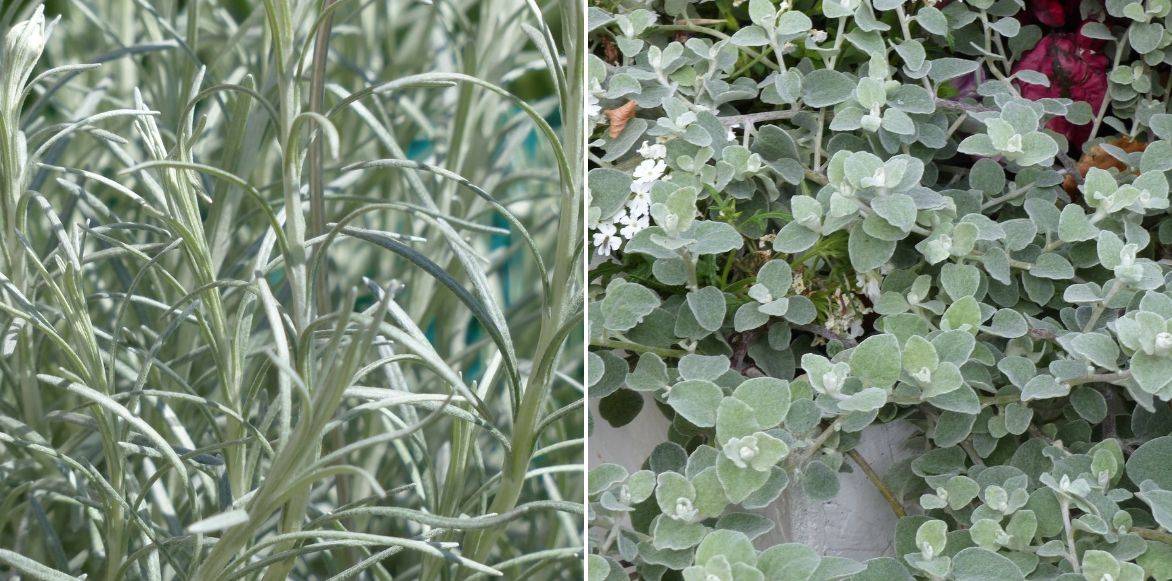
Some perennial immortelles have attractive silver foliage: Helichrysum italicum and Helichrysum petiolare ‘Silver’
If this foliage is remarkable for its grey, grey-green or grey-white tones, some woolly immortelle cultivars such as ‘Variegata’ stand out with green leaves variegated with yellow.
This silver-hued shrub is covered in flowers from June to September, sometimes until first frosts. This summer and autumn flowering is another attraction. However, perennial and annual immortelles also differ by their very different flowers.
From woody crown emerge fine leafy stems each bearing small globular inflorescences at their tip.
Helichrysum italicum and its perennial companions display small yellow heads 3 to 8 cm in diameter gathered in corymbs at the end of each stem. Plant then becomes covered with numerous flowers opening as spherical pom-poms. Lacking ligules and surrounded by long, paler bracts — fewer than those of bracteate immortelle — they are formed of closely packed florets evoking small golden-yellow buttons; Helichrysum in Greek means “golden sun”.
Some species, like the Oriental immortelle, offer flowers with changing hues that progress from pale yellow to sun yellow as they open.
The bracteate immortelles have such a distinctive character that they stand out at a glance, much like their cousin the chrysanthemum! They open as solitary heads 2 to 8 cm in diameter at the end of each stem. Flowers of Xerochrysum bracteatum are characterised by a corolla lacking ray florets, replaced by dried, translucent bracts imitating petals. These bracts, thin and rigid like paper (papyraceous), evoke mother-of-pearl and do not fade, which gave this flower its name “immortelle”. They open around a centre of tiny tubular florets in yellow marked by a ring of darker colour. On drying they produce small seeds with egrets which sometimes self-seed, dispersed by wind.
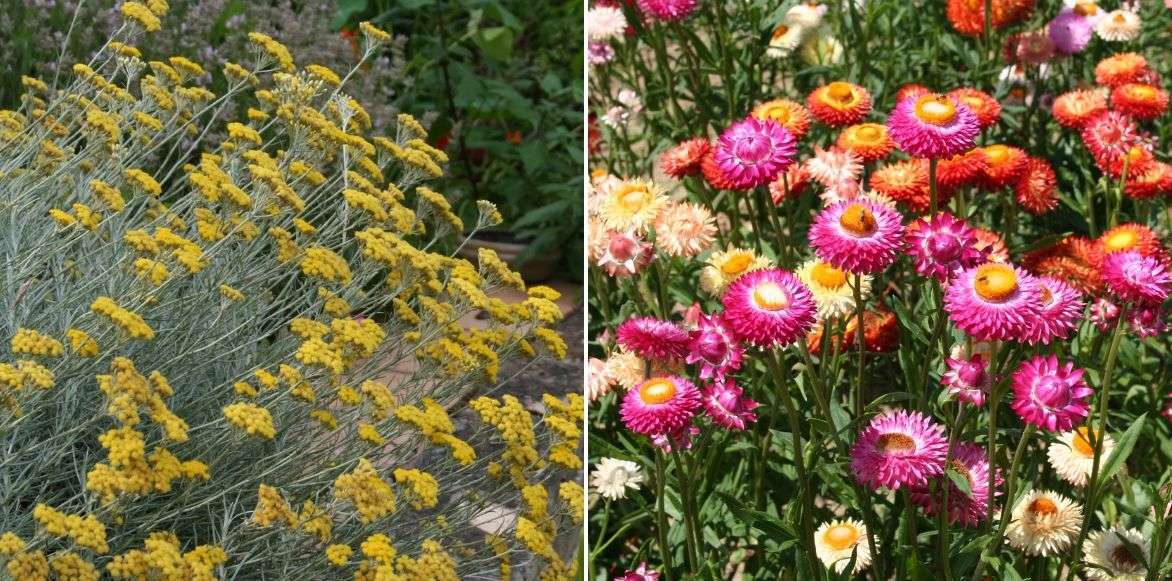
Flowering of Helichrysum italicum and Helichrysum bracteatum
Originally pearly golden-yellow, they now come, thanks to many selections, in a very wide range of flower colours, from the gaudy to the soft. They are most often sold as mixes. These bright, scaly corollas come in many shades from white to purple via lilac, salmon, Tyrian pink, red, bronze and dark yellow and orange. Some are bicoloured. Heads are most often double, numerous hybridizations having produced, for example, Helichrysum monstruosum or double monstrous bracteate immortelle, another immortelle with giant flowers!
This melliferous flowering, remarkably generous in all immortelles, renews continuously throughout summer, attracting many pollinating insects, particularly bees.
These pretty luminous heads make magnificent long-lasting dried bouquets, much appreciated by florists, particularly the bracteate immortelles. Immortelles are also splendid in fresh bouquets.
While bracteate immortelles tolerate only light frosts around -1 to -2 °C and are grown as annuals, perennial immortelles are for the most part fairly hardy (at least down to -10 to -15 °C). All appreciate warm, sunny exposures or light shade, tolerating drought and poor or calcareous soils. They grow in well-drained or shallow soil and do not tolerate acidic or heavy soils as they dread winter moisture. Bracteate immortelles perform better in fresh, enriched soil where they are more floriferous.
Immortelles easily find a place in a natural garden and especially in a dry garden to flower rockeries or wilder areas. They integrate beautifully into annual and perennial beds, borders, mixed borders, and also in pots and containers on balconies and terraces.
All immortelles have long been known for their medicinal properties. In particular, oil is extracted from Italian immortelle, an essential oil used for its anti-inflammatory and analgesic virtues and reputed for its anti-ageing action.
Fresh leaves of perennial immortelles can be used in cooking to flavour salads, fish, grills, rice or marinades; however, being not very digestible, it is preferable to avoid consuming them in large amounts. In some countries, dried flowers of dune immortelle are consumed as an infusion.
Main species and varieties
In the family of everlastings you can therefore choose between perennial species with silver, downy foliage emitting a powerful curry scent and annual varieties with bracts in bright, cheerful colours, ideal for creating dried bouquets. All bloom enthusiastically throughout summer in rockeries or slightly wild areas of the garden!
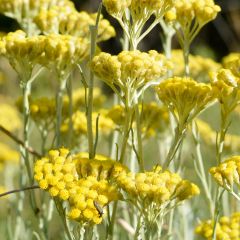
Helichrysum italicum
- Flowering time August to October
- Height at maturity 50 cm

Helichrysum italicum Plug
- Flowering time July to October
- Height at maturity 35 cm
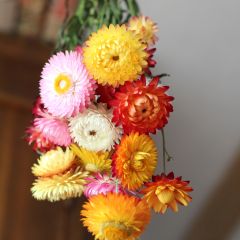
Strawflower Double Flowered Mixed Seeds - Helychrysum monstruosum
- Flowering time August to October
- Height at maturity 1 m
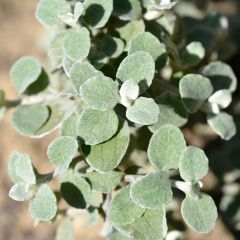
Helichrysum petiolare Silver
- Flowering time July to November
- Height at maturity 50 cm
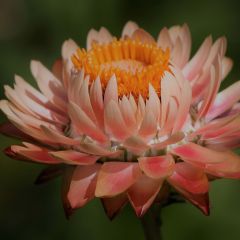
Strawflower Double Salmon Seeds - Helychrysum monstruosum
- Flowering time August to October
- Height at maturity 80 cm
Discover other Helichrysum
View all →
Available in 2 sizes
Available in 2 sizes
Available in 1 sizes
Available in 1 sizes
Available in 1 sizes
Available in 1 sizes
Available in 1 sizes
Available in 1 sizes
Available in 2 sizes
Available in 1 sizes
Planting
Where to plant everlasting?
Helichrysum or everlasting is a Mediterranean plant whose hardiness varies by species. Perennial everlastings such as Helichrysum italicum tolerate cold down to about -15°C and grow throughout France; they are widespread in Mediterranean gardens. In very cold, wet regions, perennial everlasting may start to suffer from around -10°C, as it dislikes humidity, especially in winter. Bracteate everlastings are frost-tender perennials that are grown as annuals, sown again each year in gardens.
All everlastings originate from warm, dry lands and retain a preference for heat and arid soils. Helichrysum are plants for sun and dry gardens par excellence!
They are undemanding plants that grow very easily in full sun, in any shallow, poor, rather calcareous soil, even stony or rocky, but in all cases very well drained, only vulnerable to excessively wet ground. They adapt to ordinary soil provided it does not retain water. To flower well, bracteate everlastings will however need slightly fresher, enriched soil throughout the season.
Perennial everlastings are essential in all natural gardens, particularly in dry gardens or in seaside gardens as they tolerate sea spray. They are also useful for filling gaps in perennial borders. Perennial species are a boon for dry ground, forming attractive silvery clumps year-round in rockeries and dry banks, in borders or as groundcover in the most inhospitable areas of the garden. Curry plant also fits naturally in a vegetable garden, in an herb bed or aromatic border.
Annual everlastings can be sown widely in ornamental gardens and cut-flower gardens and will flower all summer until October in pots, flowering hanging baskets and window boxes on balcony or terrace.
When to plant perennial everlasting?
Our plug plants of Helichrysum are planted in spring from March to May depending on region when temperatures rise, or in autumn in September–October in warm climate.
How to plant perennial everlasting?
In open ground
Everlasting absolutely needs perfect drainage. In heavy, compact or clay soil, incorporate gravel or coarse sand into bottom of planting hole. If ground is too wet, plant on a slope or raised rockery. Space plants about 30–40 cm apart in all directions (allow 4–6 plants per m2).
Before final planting, we recommend pricking out our plug plants into buckets filled with potting compost to harden off. Place outdoors as soon as risk of frost has passed.
- Dig hole 2–3 times wider than plug
- Work soil to break compaction
- Lighten with coarse sand
- Spread a bed of gravel at bottom of hole
- Set plug plant in centre of hole without burying collar too deeply
- Backfill, firm gently
- Water well at planting then moderately without drowning roots
In a pot
Soil must be well draining to avoid stagnant moisture that would rot roots. Woolly everlasting (Helichrysum petiolare), less hardy than other perennial types, is generally treated as an annual and, with its trailing habit, is better suited to pot culture or hanging baskets than other perennial everlastings.
- In a large container of at least 50 cm diameter, spread a good layer of gravel or clay balls
- Plant in a mix of potting compost, garden soil and river sand or pumice
- Water at planting then sparingly, only in drought and never allowing water to stagnate in saucers
- Place in full sun
Follow our advice to plant plug plants in window boxes and hanging baskets
When and how to sow annual strawflower?
The bract-bearing everlasting seeds are sown in spring, under cover February–March–April or sown directly outdoors after frosts from April for flowering starting in July.
Under cover
- Sow seeds as thinly as possible in a tray filled with good potting compost for sowing
- Cover seeds lightly with potting compost
- Firm down and water generously with a fine spray
- Keep sowings in light, under cover heated to 20°C and keep moist until germination, which takes 2 to 3 weeks
- Pot on seedlings when they measure about 5 cm into individual buckets
- Plant out in garden late May when temperature is warm enough, spacing 30–40 cm all round
- Pinch stems so they become a little more ramified; they will produce more flowers!
Direct sowing in open ground or in pot
In open ground
Flowering will start later, from August, with this method because bract-bearing everlasting seeds can only be sown once risk of frost is eliminated and on well-warmed soil, therefore not before April or May.
- Sow seeds by broadcasting as thinly as possible into well-weeded, aerated soil enriched with potting compost
- Cover lightly with potting compost
- Firm down and water with a fine spray until germination
- After germination, thin sowing leaving only most robust young plants every 30–40 cm
- Pinch tips of young stems to encourage them to become ramified
In pot
You can also choose to sow directly in a 30 cm diameter pot or in a 30 cm long planter, in a mix of potting compost, sand and garden soil. After germination, thin so only three seedlings remain per container.
How to care for everlastings?
Once well established, immortelles, whether perennial or annual, require very little maintenance. They rarely suffer from disease provided soil remains well drained.
Care of perennial immortelles
In first summer, water once a week then only during prolonged drought and always without excess. They are accustomed to long, dry summers typical of Mediterranean climate and need no watering once well rooted.
In a pot, water a little more often while always allowing substrate to dry well between waterings.
The perennial immortelles are undemanding plants for which no fertiliser is necessary.
In regions with harsh winters, bring in the more tender Helichrysum such as Helichrysum petiolare to shelter from frost and rain, water them sparingly during winter and bring them back outdoors in May.
And follow our advice to care for perennials and protect plants from cold.
Pruning of perennial immortelles
Pruning is not essential; it simply helps keep a neat shape. They tolerate regular but not drastic pruning in late winter, which will prevent them forming old wood, because parts that become lignified into hard wood gradually become bare and will not produce new shoots.
- At end of season, simply cut flower stems with a pruning shear to prevent flowers setting seed and needlessly exhausting plant: hang them upside down to dry to make dried bouquets!
- Pruning should be carried out only on shoots of the year that are still green and tender: avoid cutting into old wood, it will not regrow. In early spring (March–April): cut back the bulk of young shoots to 2 or 3 cm from old wood, no more.
For more information, discover our advice sheet: How to prune helichrysum?
Harvesting leaves
Harvest fresh, highly aromatic leaves of Helichrysum or Curry Plant throughout year as required to flavour dishes and salads.
Care of bract-bearing everlastings
The bract-bearing everlasting shows very rapid growth and will therefore appreciate slightly more fertile soil enriched with a liquid fertiliser for flowering plants once in the season for in-ground specimens and once a month from June to September for container specimens.
It will also need more regular waterings than its perennial cousins, which will make it even more floriferous.
Regularly remove faded flowers to encourage new ones and extend flowering. However, allow a few flowers to set seed: you can sow them the following year. Plants will be discarded at end of season.
Harvest of dried immortelle flowers
Les everlastings, whether perennial or not, are so called because their flowers do not fade, even after flowering, making them among best flowers for dried bouquets.
Pick flowers in dry weather, just before they are fully open. Hang flowering stems upside down in a dry, dark and airy place. Once leaves have dried, remove them from stems as they whiten when drying and will look unattractive in bouquets. Discover our collection of flower seeds for dried bouquets.
→ Learn more about drying and storing Helichrysum, or curry plant, in our tutorial!
L’Helichrysum italicum is among effective moth-repellent plants: discover how to use it for this purpose.
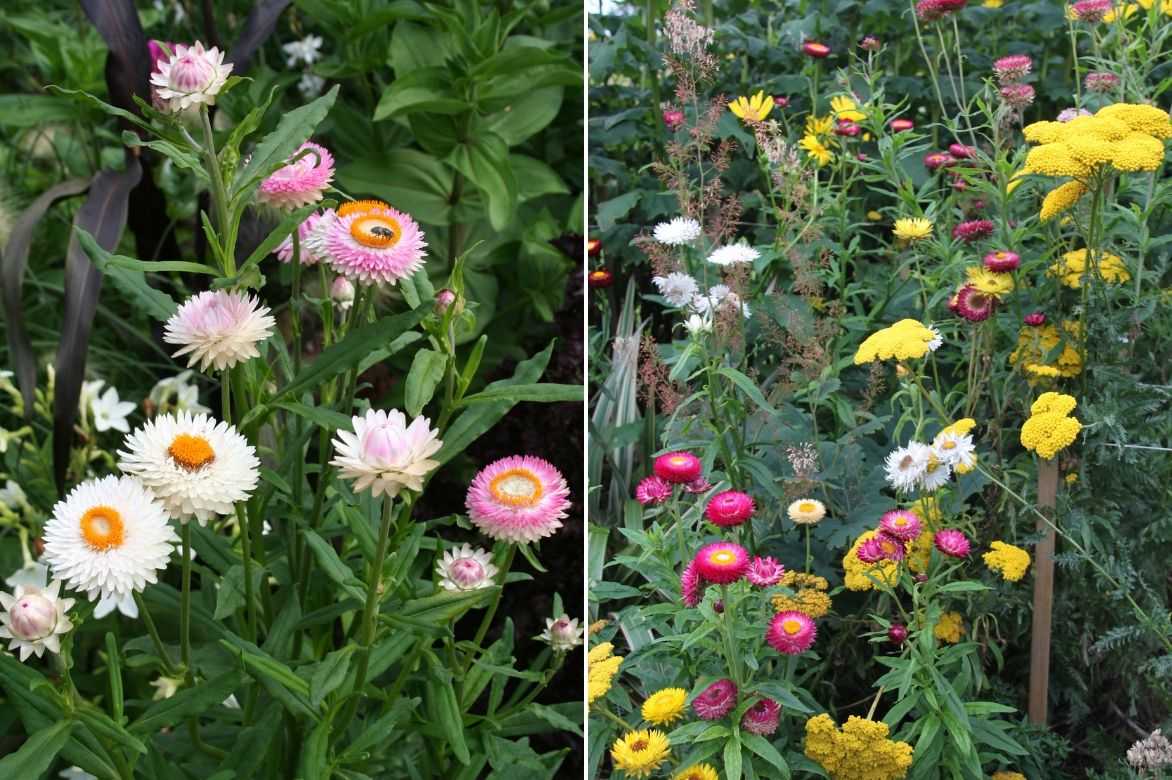
Diseases and potential pests
Relatively resistant to diseases, Everlastings have few enemies.
In hot, humid weather, especially in late summer, they can be susceptible to powdery mildew, which leaves a white down on the foliage. As prevention: water at the base without wetting the leaves and spray with nettle manure, a horsetail decoction or Bordeaux mixture. If affected: remove and burn diseased parts and follow our advice to combat powdery mildew.
They can also be targeted by aphids and caterpillars: spray with water mixed with black soap to dislodge them.
Propagating perennial everlastings
Perennial immortelles such as perennial immortelles such as Helichrysum italicum or Italian everlasting are easily propagated in June by herbaceous cuttings or by semi-ripe cuttings in July–August.
How to take cuttings of Helichrysum or Immortelle
- Take stem pieces without flowers 10–12 cm long
- Remove lower leaves from stem
- Insert cuttings into buckets filled with potting compost and river sand
- Keep substrate moist until rooting
- Protect young seedlings from frost throughout winter
- Plant out following spring when temperatures have warmed
- Pinch stems to encourage bushier growth
- Water at planting then sparingly
→ Learn more about Helichrysum propagation in our advice sheet
Associate
Just like their southern cousins, lavender or santolina, perennial everlastings always bring a Mediterranean touch to a garden that is at once exotic and elegant. They are indispensable in dry gardens and sun-baked wild corners, where they form pretty silver tussocks all year round.
In a rockery, Helichrysum italicum or H. petiolare will keep company with other Mediterranean perennials that are just as undemanding and drought-hardy: a creeping rosemary, a small potentilla, a Tanacetum haradjanii, armoises or yellow sedums. They can be paired with other perennials that require the same growing conditions such as Spanish grass, woolly armoise, Cerastium tomentosum.
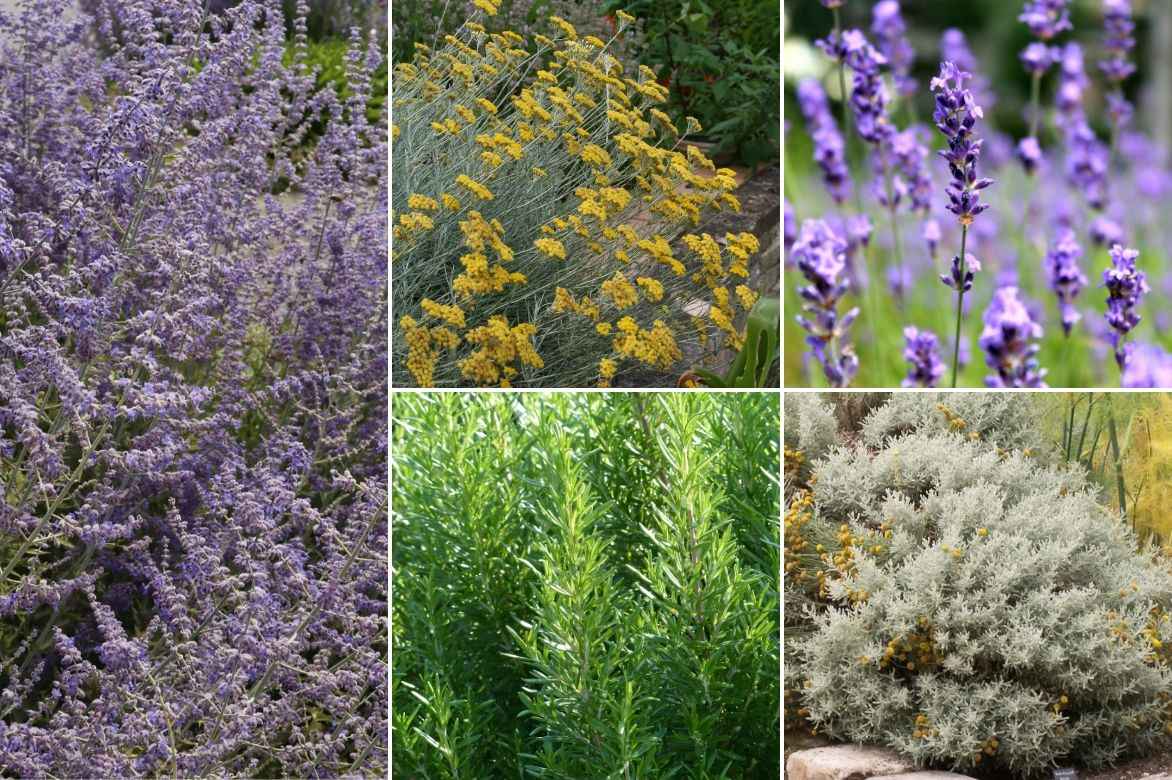
An example of a Mediterranean-inspired combination: Perovskia atriplicifolia ‘Blue Spire’, Helichrysum italicum, lavender, rosemary and santolina
Beside an Artemisia, santolinas and a few clumps of lavender, they will form an aromatic border of glaucous or grey foliage redolent of garrigue. With their bright foliage that persists through winter, paired with delosperma and dianthus, they also make good groundcover beneath Mediterranean shrubs such as oleanders, cistus or olive trees.
Their vivid yellow flowering will also echo blues or purples offered by ceanothus or buddleias. For a riot of yellow blooms, place them near achilleas, helianthemums, coreopsis, helenium while they will provide a lovely contrast with complementary blues from perovskia, caryopteris, nepeta and salvias. On a dry bank, pair them with small dry-soil shrubs such as Hertia cheirifolia, Hypericum olympicum, creeping broom and drought-tolerant euphorbias.
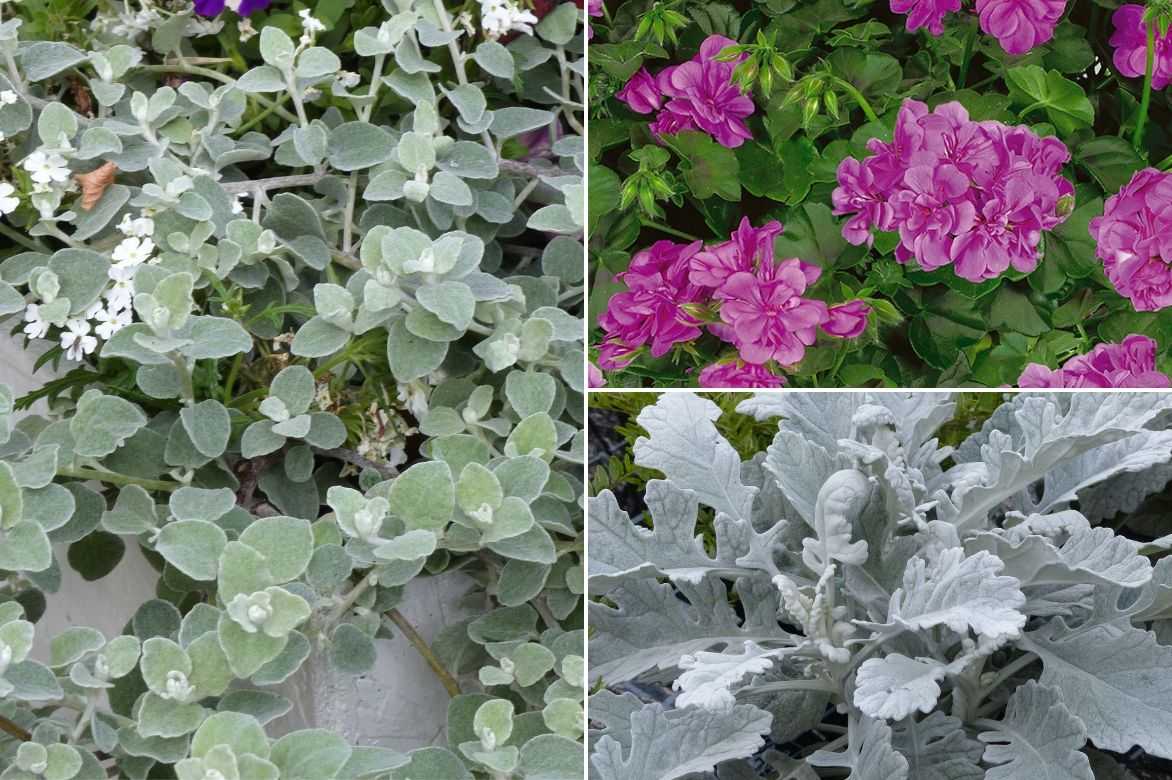
An idea for a hanging basket combination: Helichrysum petiolare ‘Silver’, Pelargonium ‘Amelit’ and dusty miller (‘Silver Dust’ for example)
In a sunny naturalistic meadow, perennial everlastings will take part in abundant, colourful summer scenes with very floriferous dry-soil perennials such as echinops, Erigeron karvinskianus, echinacea, hollyhocks, Centaurea moschata, leucanthemums, agastaches and astragalus. In a scree garden, the silver tussocks of perennial everlastings will sit alongside small wispy grasses such as Stipa pennata or Stipa tenuifolia, or with agaves or opuntias for more contemporary combinations.
In the vegetable garden, you can plant the curry plant with other easy-going aromatic perennials such as thymes and salvias.
Meanwhile, bracted everlastings or annual everlastings, with their slightly old-fashioned charm and infinite range of bright hues, are at home in cottage gardens where they add an exotic touch to colourful mixed borders or flowerbed edges. Flowering from high summer into early autumn, mixed with helenias, gaillardias, autumn sedums, late-flowering perennials or vibrant annual African daisies, they bring saturated colour at a time of year when blooms are scarcer.
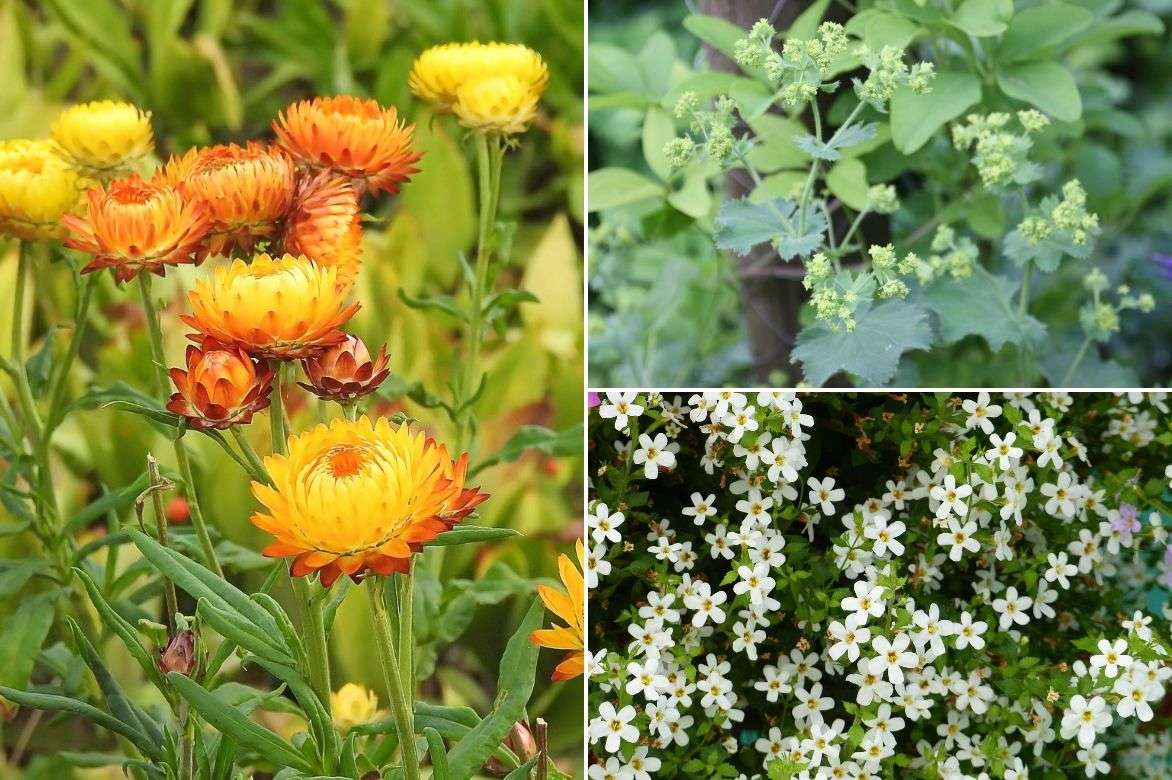
An example combination: Helichrysum bracteatum (in your chosen colour or a mix), lady’s mantle (such as A. epipsila) and Bacopa ‘Snowtopia White’
They also go well with the imposing blooms of dahlias. Their shiny heads integrate nicely into a mass of light grasses such as Pennisetum (fountain grass), miscanthus, Stipa pennata or feathered barley, which will lighten their strongly defined flowers. Asters and chrysanthemums are also good companions to extend their flowering into autumn.
In a cutting garden, pair them with statice or amaranthus — they are among the easiest flowers to dry! In containers, mix them with zinnias, small dahlias combined with the feathery seedheads of small grasses.
→ More ideas for combining Helichrysum in our care sheet!
Useful resources
- Our flower seeds for dried bouquets let you grow your own flowers for drying to create arrangements with vintage charm
- All our plants for dry garden
- Discover our 7 ideas for combining plants to create beautiful summer planters
- Subscribe!
- Contents
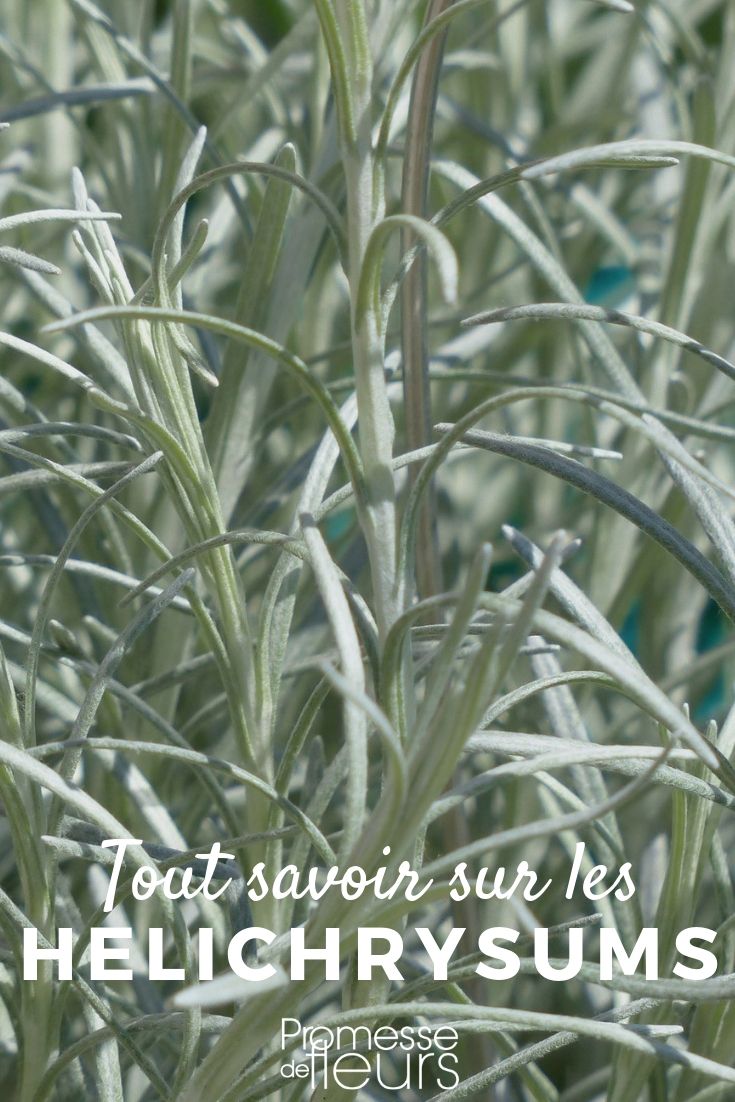































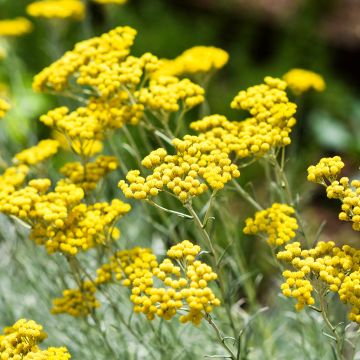

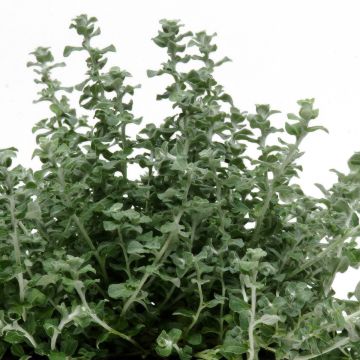
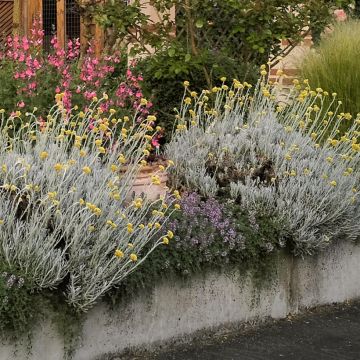
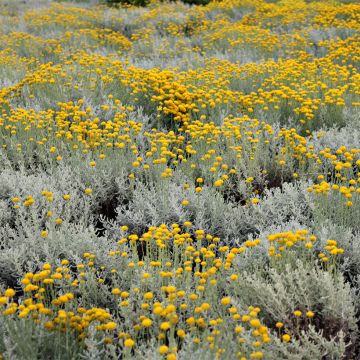

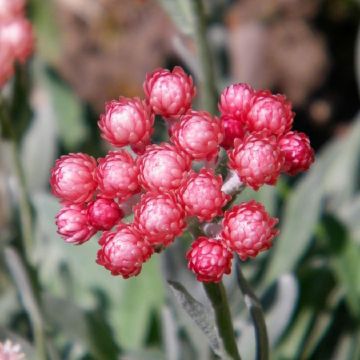
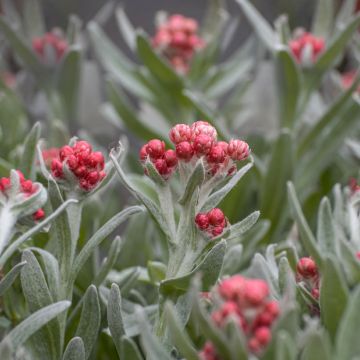
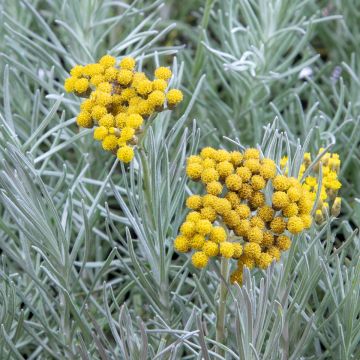
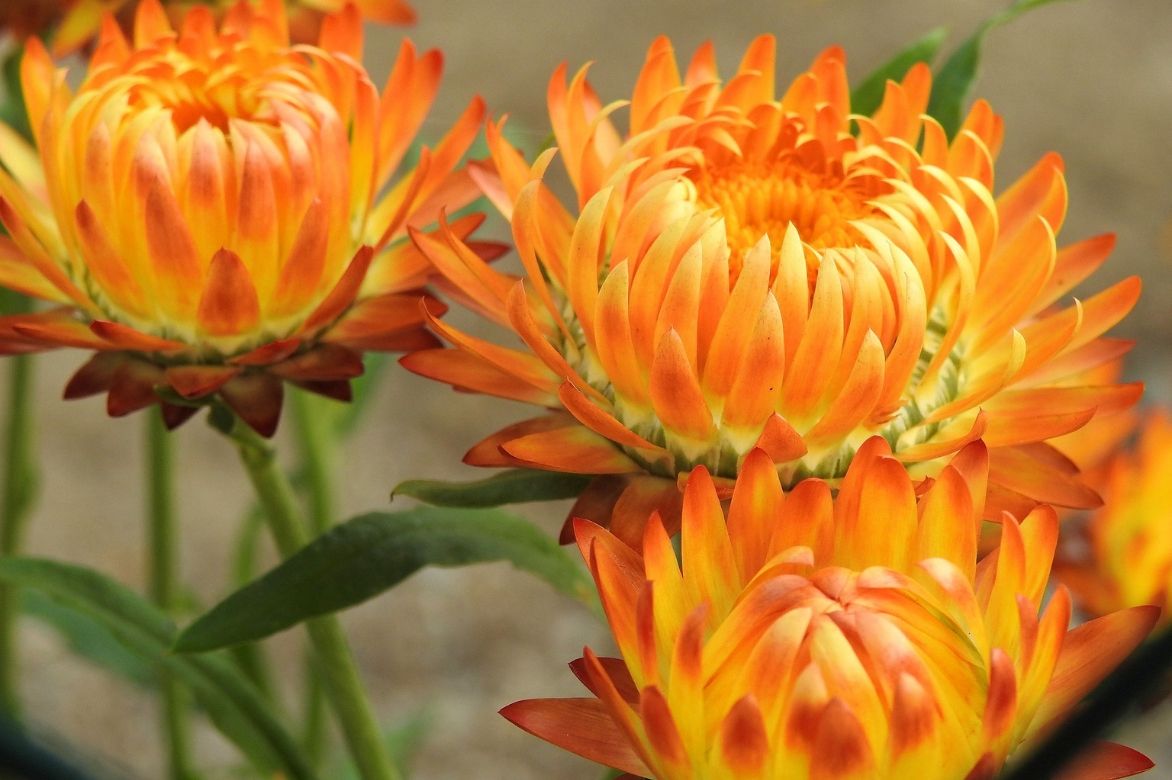

Comments